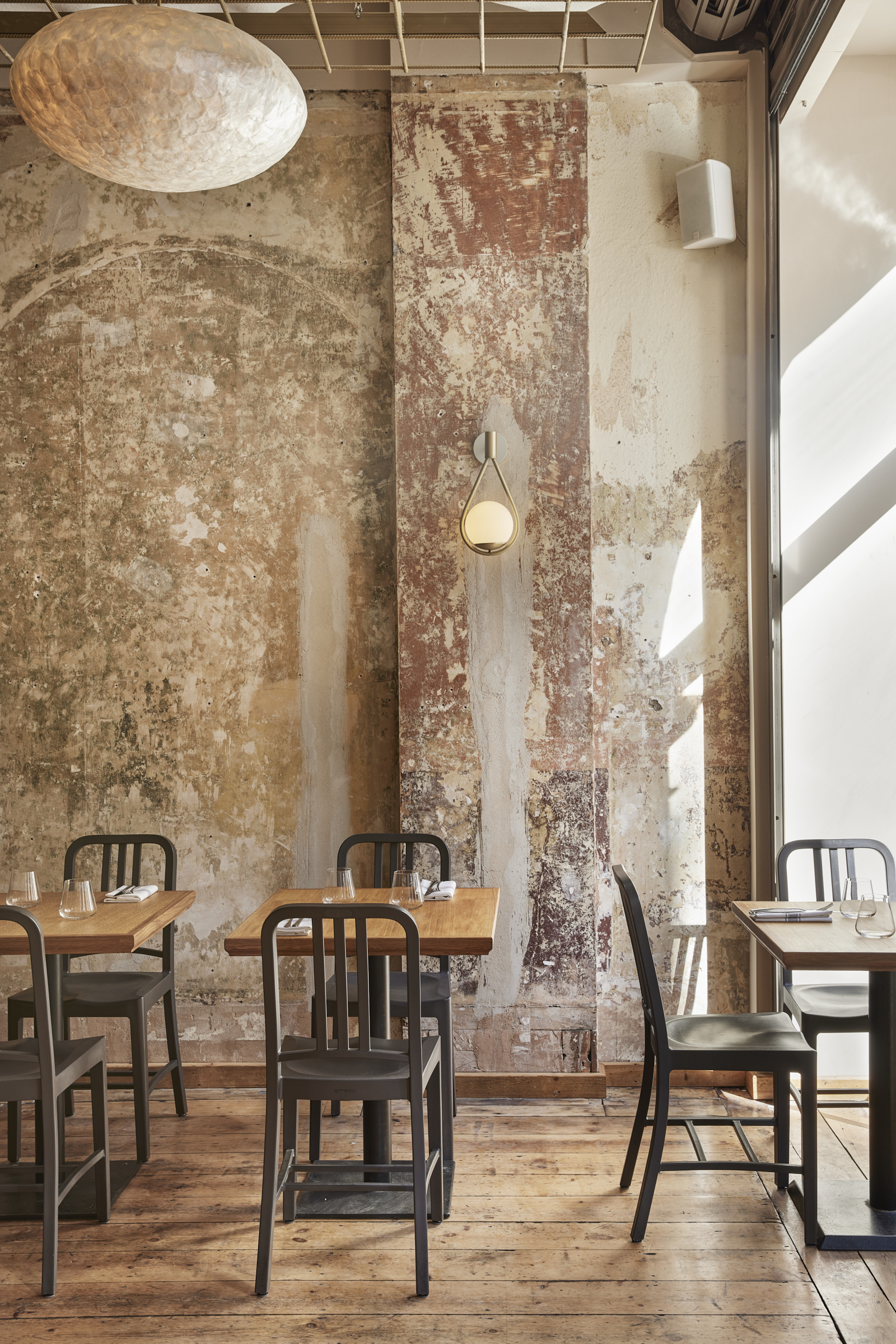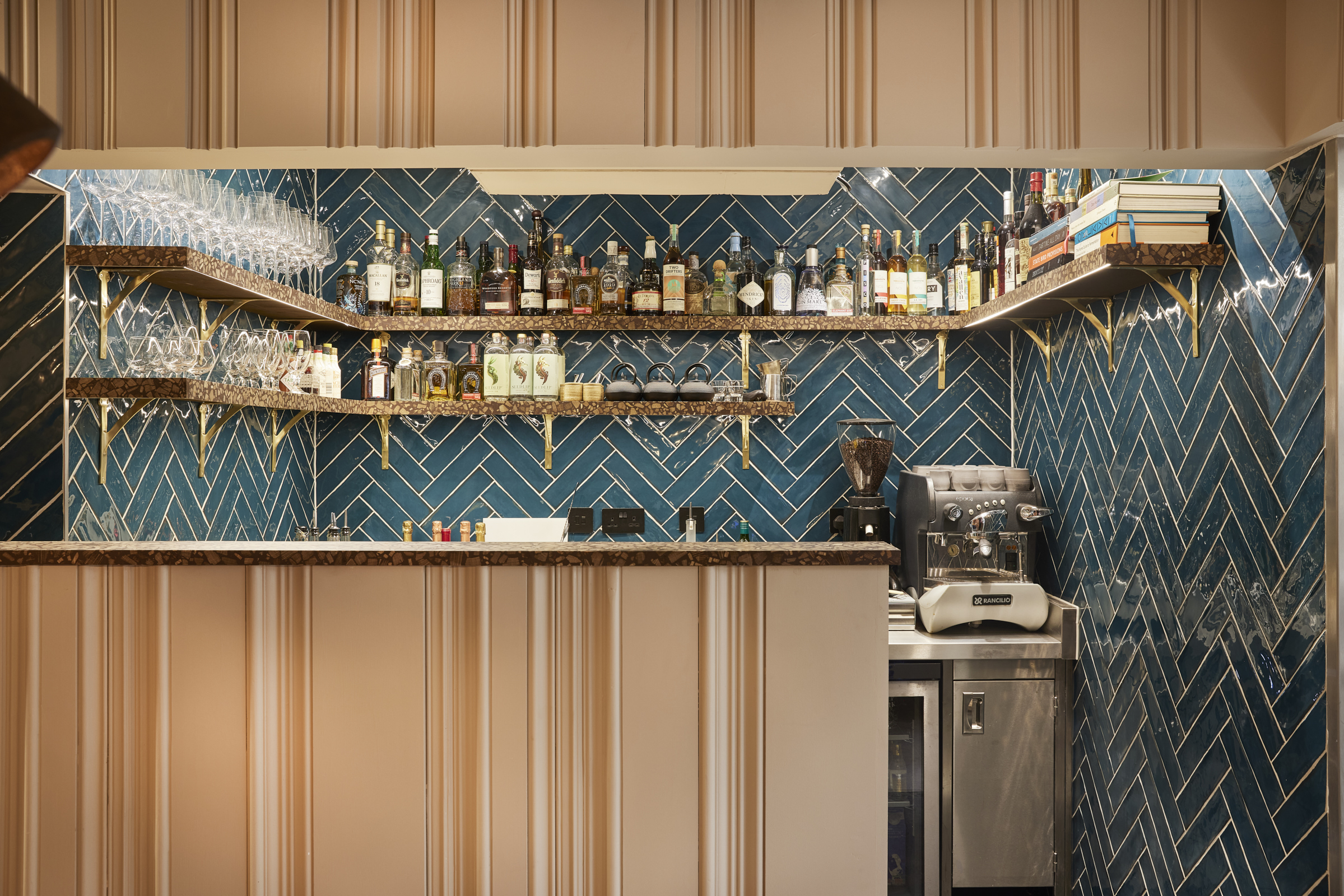[ad_1]
In a latest report we explored how the quest to decrease waste will improve the way F&B spaces are made. Growing on the restorative style framework referenced in this piece – a blueprint for sustainable place envisioned by David Chenery and Brendan Mullard of London-based mostly studio Object House Location – we speak with Chenery to locate out what this program can give.
What is the restorative design and style framework and how has it occur to be?
DAVID CHENERY: There was not a lightbulb moment, but it started out with a concern: what would a restorative restaurant glance like? The origin of the phrase cafe is ‘restore’ and this caught with us. Brendan and I had currently been contemplating about sustainability, but then we arrived throughout the circular economy design and a basic notion of relocating from a linear strategy to some thing that comes again on alone. The common developing is refitted 20 to 30 occasions, and still the ordinary cafe lifespan may only be five years. As designers we have a responsibility to understand that chain and lower the ongoing impression of what we do.
Is the cafe room especially receptive to this framework?
Indeed and no. There is a subsection of each industry that would be receptive, but for us there is some thing especially selfless in great hospitality design and style. At the close of the day, humanity has been really small sighted in its growth plans, and the simplest definition of sustainability is one thing that can keep on indefinitely – so in that sense we’ve been failing. We will need to be open to being familiar with this, and hospitality can be a way to help us recognize the place we sit in a wider program.
What does it carry to the guest knowledge?
It is quick to ignore we’re in a bubble not every person cares about sustainability, and we need to be sincere and recognize that most men and women want eating places that transpire to be sustainable rather than sustainable restaurants. At the same time we require to be informed that we are producing commercially sustainable businesses as well, which suggests an excellent encounter that aligns with brand DNA. Some diners will truly appear at this restorative component and have it impact their conduct, but for the relaxation we are attempting to flip the default assumption that as designers we are going to flip up toss almost everything out and start out once again.

 Gail’s Bakery at Exmouth Marketplace in London helps make use of reclaimed features that assist the principle of getting a contained ecosystem of structure supplies.
Gail’s Bakery at Exmouth Marketplace in London helps make use of reclaimed features that assist the principle of getting a contained ecosystem of structure supplies.
Where has this been utilized?
We’ve begun operating with Gail’s Bakery, which has designed a ‘waste-considerably less sourdough’ where any bread they really do not promote the working day before is turned into a porridge and integrated into the sourdough combine. We made use of this as a launch issue, and asked ourselves how we could refurb while celebrating as considerably as possible that is already there. We have taken the chairs and resprayed them for the upcoming web site alongside with timber from the tables that has been chopped and reformed it into new items, both of those of which helps us make loops all-around a circuit of distinct qualities and a contained ecosystem with a lender of materials to move all around. For us, it’s about trying to keep all the things except if we simply cannot.
What sort of issues are involved in this approach?
When we’re looking at this circular design and style economy we have to inquire tougher, additional hard questions. On a realistic stage factors come to be much more complicated, but often we get wonderful results. At Gail’s we discovered that back again in 1890 there was a warm water lamp in Exmouth Marketplace which was a pretty early sort of vending equipment that bought scorching drinking water, coffee, tea and beef broth. For the reason that there’s a cost-free drinking water dispenser in Gail’s we needed to do a tribute to this lamp and spent a extensive time striving to find this fountain – not one that seemed like it, but the authentic reclaimed piece that could go on the wall and have some integrity. We didn’t locate it until finally a week before opening, but it comes back again to the storytelling factor, and participating people today with this authenticity, even if it does consider much more legwork.
Furthermore at Apricity: we had to get out a timber staircase to reposition the flow of the space, but did not want to squander that, so we took these stairs apart and turned them into timber cladding all over the rest room. It may possibly not be more cost-effective, and it might choose extra exertion, but human beings reply to the effort they see has absent into a little something. The psychological sign to a show of genuine work like that is ‘Wow, if they cared so much about this cladding, picture how superior the foods is.’
How does this framework interact the storytelling and narrative of design?
At worst, storytelling can be a veneer that handles the worst of our sins, but at greatest it really is a way to hook up emotionally with clients and clearly show them what we’re executing. For us, the restorative structure framework is a way of filtering these tales. Likely back again to the past position, if you see someone’s plainly slice a corner or is trying to preserve dollars by placing up marble wallpaper fairly than employing serious marble, then subconsciously you’re questioning where by else they’ve cut corners. That is exactly where storytelling is really effective.


 Like Gail’s Bakery, London cafe Apricity will make whole use of present options and elements.
Like Gail’s Bakery, London cafe Apricity will make whole use of present options and elements.
What functional suggestions do you have for designers wanting to adopt a restorative structure framework?
It is more about the concerns you inquire. For starters, what is the least we can do to make a thing exceptional? Alongside that: is there any way I can do almost nothing? Secondly, can we use one thing that currently exists? If not, can we make it out of sustainably resourced product? This is an oversimplification, but these 3 issues can really support move absent from the default.
What does the long run of net-zero dining establishments and restorative layout glimpse like?
There is an fascinating discussion to be had in how we do this on a bigger scale, and we’re setting up to search at this by functioning across chains like Gail’s and growing these round economies. It’s not instantly apparent what it will seem like, but I think we should really generally recall that the most sustainable restaurant is the 1 that doesn’t exist. Immediately after this, the 2nd most sustainable cafe is the one that already exists, for the reason that you just cannot fit a thing out to be extra sustainable – it doesn’t make any perception from an embodied carbon viewpoint. The 3rd most sustainable, then, is the 1 that is intended with the principles of a round financial system. In any extensive-phrase plan, it’s all about switching that level of look at.
[ad_2]
Supply hyperlink





More Stories
A Review of the Ford ‘Mustang’
Skills You Need to Restore a Classic Car
Five Steps for Buying Quality Used Cars